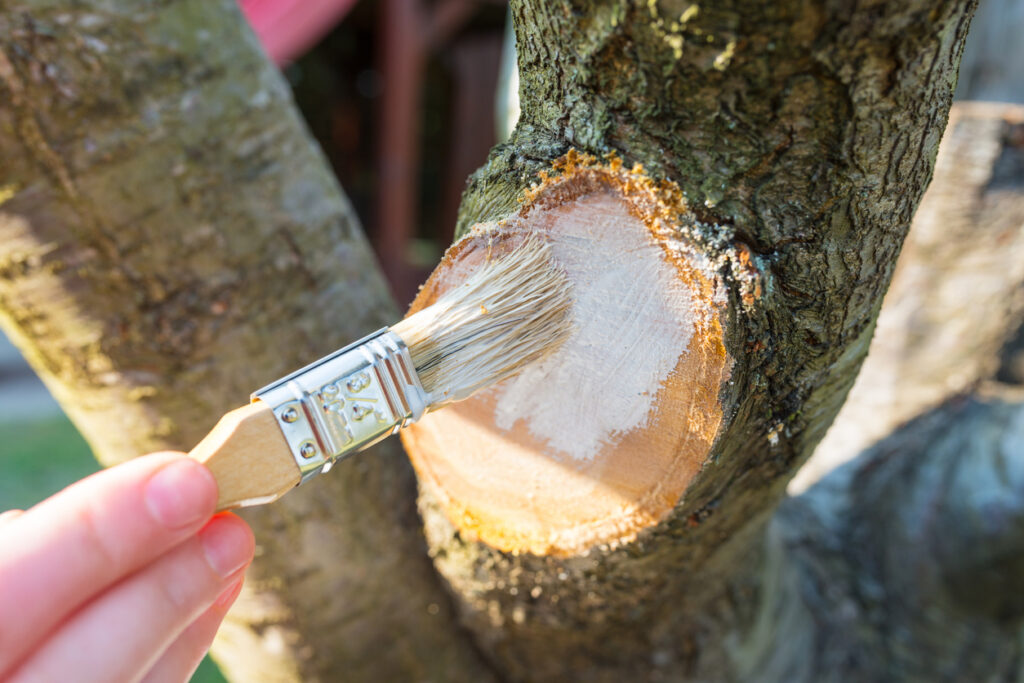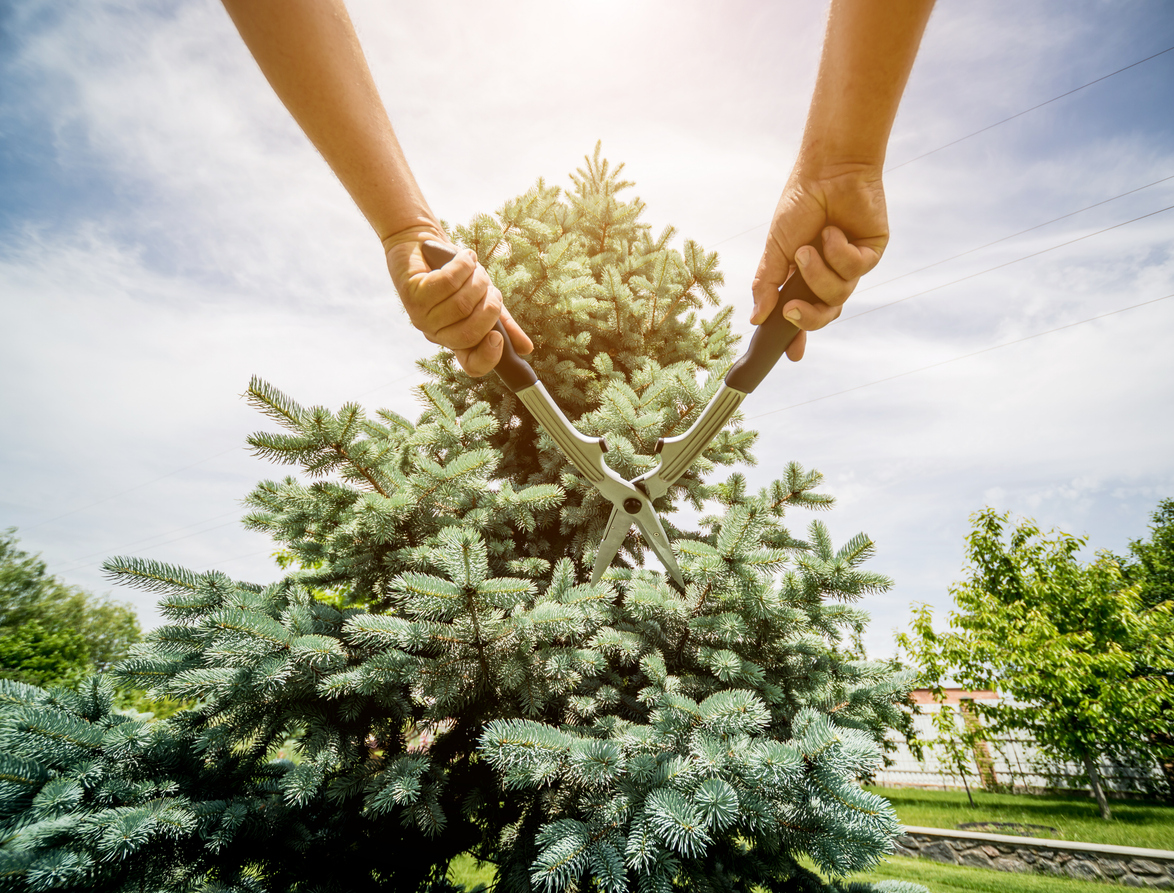Trees add value, beauty and shade to our homes and businesses. Yet, when it comes to caring for them, many people inadvertently cause more harm than good. Confusion around tree care can lead to poor maintenance practices, which may harm them in the long run. Let’s debunk some of the most common myths about tree care so we can nurture healthier trees.
Myth #1: Trees Take Care of Themselves
Many believe that trees can take care of themselves without human intervention. While it’s true that trees in forests thrive without us, trees in cities and towns face different conditions. Urban trees often require extra care to compensate for the stress of unbalanced ecosystems. Regular maintenance is crucial to ensure their health and longevity.
Practical Steps for Regular Tree Maintenance
Regular watering, mulching and pruning are essential for urban trees. Checking for pests and diseases also helps prevent issues before they become serious. Remember, a little attention goes a long way in maintaining the health of your trees.
Myth #2: Pruning in Any Season is Fine
Another common misconception is that you can prune trees at any time of year. However, trees have specific growth cycles, and trimming during the wrong season can cause stress and even permanent damage to trees.
Best Times to Prune
The best time to prune most trees is late winter or early spring, just before new growth begins. Pruning during this period minimizes stress and promotes vigorous regrowth. Some trees, however, like oaks, should be pruned in the dormant season to prevent disease.
Effective Pruning Techniques
Always use clean, sharp tools to make precise cuts when pruning. Remove dead, diseased or damaged branches first, followed by any branches that cross or rub against each other. This technique ensures that your tree remains healthy and strong.
Myth #3: “Topping” is an Acceptable Pruning Practice
“Topping,” or cutting off the top of a tree, is incredibly damaging to the life of a tree. It’s often done to reduce the size of a tree, but it causes more problems than it solves, weakening the tree and making it more susceptible to disease and pests. Topping removes a significant portion of the tree’s canopy, which disrupts its ability to produce energy through photosynthesis.
Alternatives to Topping
“Crown reduction” or “selective thinning” are methods that reduce the size of the tree while also preserving its natural shape and health. Consulting with professionals, like the Excel Tree Care Team, can assist you with the best course of action for your trees.
Myth #4: Trees Don’t Need Watering After They’re Established
While newly planted trees need regular watering, many people are under the impression that mature trees don’t need regular watering. This is far from true, especially during periods of drought or extreme heat.
Recognizing Signs of Water Stress
Signs that a tree needs water include wilting leaves, scorched leaves and premature leaf drop. Mature trees can suffer during prolonged dry spells, so it’s essential to keep an eye on their condition.
Best Practices for Watering Trees
Watering deeply and infrequently is better than frequent shallow watering. This encourages roots to grow deeper, making the tree more resilient to drought. Drip irrigation systems can be very effective for this purpose.
Myth #5: Staking is Necessary for Every New Tree
Staking can support young trees, but it’s not always necessary. In fact, staking incorrectly can do more harm than good by restricting trunk growth and causing weak root systems.
Signs That a Tree Needs Staking
Staking is helpful if a tree is in an area with high winds or loose soil. However, it should be done correctly and only for a short time until the tree can support itself.
Proper Staking Techniques
When staking, use flexible ties and place the stakes outside the root ball to avoid damage. Ensure that the tree has some movement to encourage strong trunk growth. Stakes should be removed after one growing season.
Myth #6: Fertilizing Trees is Always a Good Idea
Yes, fertilizers can help trees grow, but they’re not always necessary. Over-fertilizing can lead to excessive growth, which makes trees more vulnerable to disease and pests.
Assessing the Need for Fertilization
Before fertilizing, test the soil to determine if there are any nutrient deficiencies. Healthy, mature trees often get enough nutrients from the soil and don’t require additional fertilization.
Appropriate Fertilization Practices
If fertilization is needed, use a slow-release fertilizer formulated for trees and shrubs. Apply it in the fall or early spring and follow the recommended application rates to avoid over-fertilizing.
Myth #7: Tree Wounds Should be Painted
It was once common practice to paint tree wounds with sealants or wound dressings. However, research has shown that these products do not prevent decay and can even disrupt a tree’s natural healing process. When a branch is cut, the tree forms a callus over the wound, which acts as a barrier to disease and decay.

Best Practices for Managing Tree Wounds
Instead of using wound dressings, make clean, proper cuts when pruning. Ensure that cuts are made just outside the branch collar to promote natural healing. Keeping trees healthy through proper care will also promote their natural defense mechanisms.
Myth #8: All Trees Have Deep Root Systems
Many people assume that trees have deep, extensive root systems. But in most cases, tree roots are found in the top 18-24 inches of soil, spreading out horizontally rather than vertically. Understanding root structure is crucial for proper tree care. For instance, knowing that roots are shallow can help prevent damage from lawn equipment and new construction.
Protecting Tree Roots
To protect tree roots, avoid compacting soil around the base of the tree. Use mulch to cover the root zone, which helps lock moisture in as well as reduce changes in temperature.
Myth #9: All Tree Diseases are Fatal
Not all tree diseases are a death sentence. Many can be managed or treated with proper care and intervention. To prevent serious damage early detection is key. Regular monitoring and early treatment can save your trees.
Strategies for Disease Prevention
Healthy trees are more resistant to diseases. Proper watering, fertilization and pruning practices help to maintain tree health. Removing diseased leaves and branches can also prevent the spread of infections.
Myth #10: Trees and Lawns Can Easily Coexist
While it’s possible for trees and lawns to coexist, they often compete for resources like water, nutrients and sunlight. This competition can stress both the tree and the lawn. Prioritizing tree health is essential since trees provide more long-term benefits compared to grass. Mulching around the base of the tree can help reduce competition and improve the soil. Selecting shade-tolerant grass species and avoiding excessive fertilization near the tree’s root zone will ensure that both tree and lawn coexist cooperatively.
Contact Excel Tree Care in Atlanta
Debunking common myths about tree care can help homeowners and businesses alike maintain healthier, more vibrant trees. By understanding the true needs of trees, we can provide better care and enjoy the benefits they offer. Remember, proper tree care is an investment in the beauty and value of your property. For more personalized advice on tree care, please reach out to our experts at Excel Tree Care. Together, we can create a greener, healthier environment for all.

